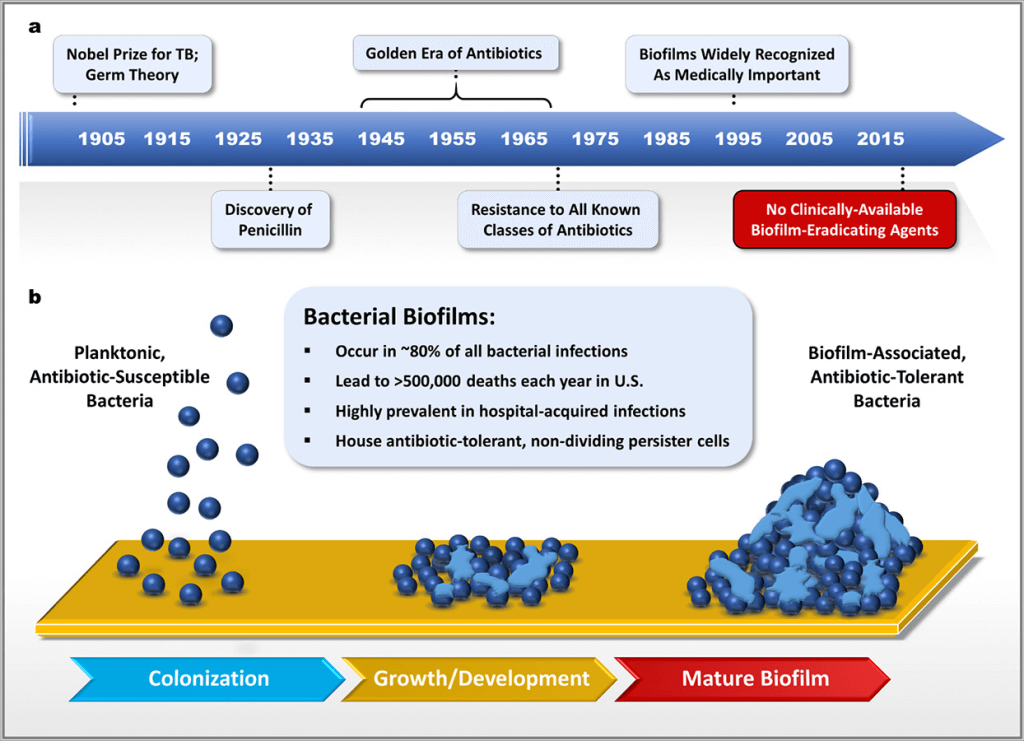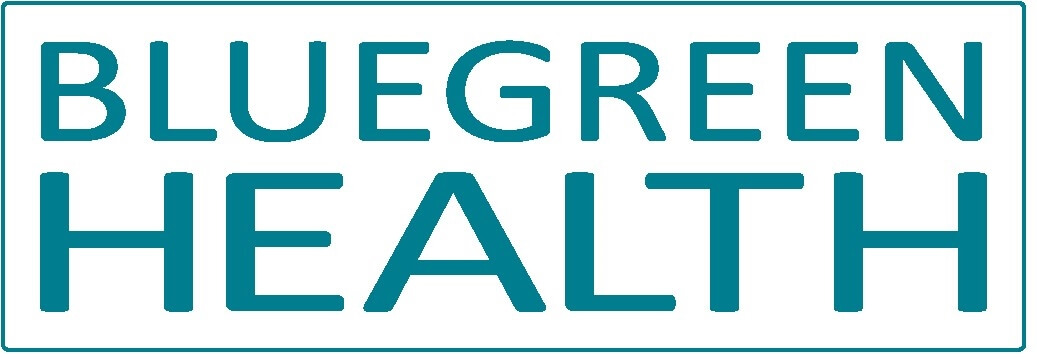
About 80% of human infections affecting the gastrointestinal, genitourinary and respiratory systems, oral mucosa and teeth, eyes, middle ear and skin are caused by biofilm-associated microorganisms (1)
The number of chronic, difficult to treat infections has sky rocketed in the last decade. Chronic infections can be caused by different types of microorganisms: bacterial, parasitic or fungal.
Recently, a huge number of biofilm associated infections was documented following surgical procedures: joint replacement, stents, and use of urinary catheters.
Although starting as simple infections, very quickly the pathogens attach themselves to the tissues, start forming colonies, and start secreting a mucus type substance called extracellular polymers that is hosting the bacteria.
Most bacteria form biofilms, which are multicellular microbial communities embedded in a self-produced exopolymeric substance (EPS) largely composed of a protein anchor and different extracellular polymers. Bacteria within a mature biofilm community exist in an altered metabolic state and different physical environment than their free-floating, or planktonic, relatives (2)
Biofilms are very complex and powerful environments with multiple functions:
- act as an invisibility shield, helping bacteria hide to avoid detection and destruction by the immune system
- form a physical barrier protecting the bacteria from antimicrobial agents like antibiotics
- allow bacteria to freely exchange genetic material and mutate
- make any laboratory testing to isolate the responsible bacteria extremely difficult
Biofilms develop equally on living and non- living surfaces, for example the slippery layer on stones at water edge, slimy layers on kitchen surfaces, and the dental plaque accumulating on our teeth few hours after dental brushing.
Biofilms are responsible for accelerating the process of antimicrobial resistance that renders the main classes of antibiotics useless.
Antibiotics and antiseptics cannot penetrate the mucus like biofilm layer and with the standard medical treatments it is extremely difficult to treat chronic biofilm infections, making them a serious health threat.
Antibiotic resistance ‘could kill humanity before climate change does’, warns England’s chief medical officer Professor Dame Sally Davis
The best way to eradicate the biofilm is mechanical removal.
While mechanical removal is suitable in the oral cavity, in chronic wounds, or removing a biofilm infected catheter, the majority of the human infections cannot be resolved in a similar fashion.
Current researched is geared towards effective biofilm disruptors.
Natural herbs and enzymes are being extensively researched for their ability to disrupt biofilm formation, penetrate biofilms and exert antibacterial activity superior to antibiotics and without side effects.
One old medical treatment successfully used before the antibiotics were discovered is making a comeback: phage therapies.
It increasingly looks like: Bacteria 1- Antibiotics 0
